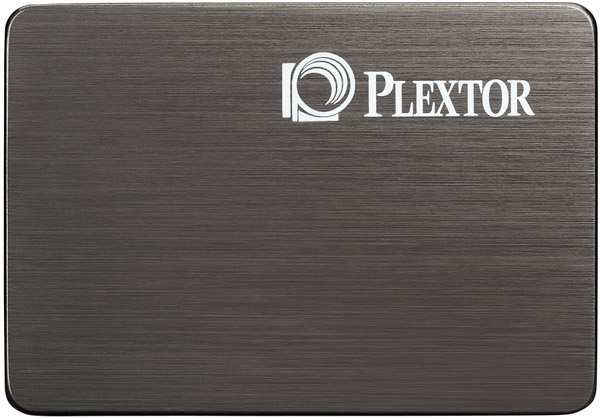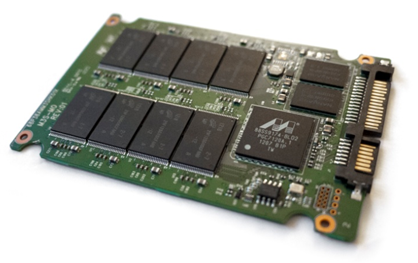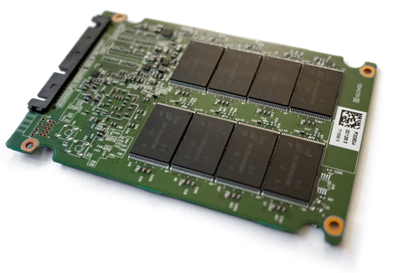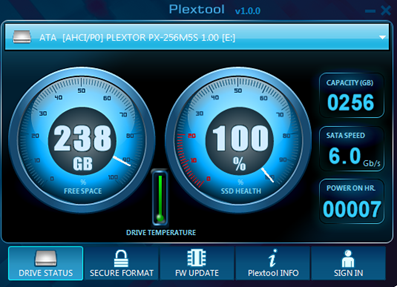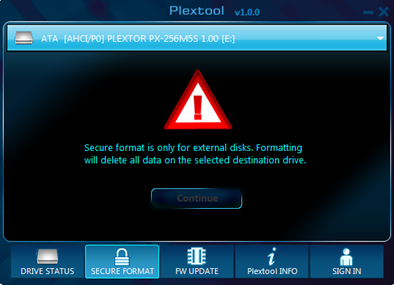Plextor M5S 256 GB Review: Marvell Inside, With A Twist
Plextor's optical drives were always known for their quality. Now, the company is trying to carry that reputation over to SSDs. Its M5S is actually a fourth-generation offering based on Marvell's controller technology. But Plextor adds its own spin, too.
Inside Plextor's M5S 256 GB
Plextor's M5S comes apart quite easily via four screws on each side of its enclosure. Popping the top does, of course, void the drive's warranty, so we don't recommend doing that unless you have a good reason to as a diehard tinkerer.
With the SSD stripped down, we see 16 NAND modules manufactured by Micron (part number 29F128G08CFAAB) on a 25 nm node. In addition, there are two 256 MB DDR chips from Nanya that serve as the data buffer.
The M5S doesn't come with any accessories or software. The only contents in the box are the SSD and a quick installation guide. Plextor does provide a tool kit called PlexTool, though, which can be downloaded from its Web site. Currently, version 1.0.0 does not support the M5S, although Plextor claims that an updated version is in the works that'll add support. The utility offers a means to check the drive's status, update its firmware, and secure erase the drive.
The Drive Status button brings up a screen with SSD health, free space, the SATA data rate, and power-on hours.
Unfortunately, the Secure Format function does not work if the drive has an active volume, and it only works plugged in via USB. That means using the feature requires a SATA to USB bridge. This is done to prevent accidentally deleting data. For most people, though, connecting the SSD via USB is not really an accessible option. In our opinion, allowing Secure Format to work over the native SATA interface with appropriate warnings is adequate.
Plextor's Technologies
Back in its heyday, Plextor was known for the advances in optical drive reliability and performance it introduced to the industry. It's trying to do the same thing in the SSD space.
Get Tom's Hardware's best news and in-depth reviews, straight to your inbox.
In choosing Marvell's controller technology, Plextor is able to exercise a greater degree of control over the firmware. One of its most touted additions is True Speed technology, which claims to sustain fresh out of the box performance over the duration of the SSD's life. As you no-doubt have heard, sustaining write performance is an Achilles' heel for SSDs in general, and Plextor is attempting to mitigate that to a degree.
As with most proprietary technologies, vendors don't like to detail their enhancements. The most information we could get out of Plextor was this bit about Instant Restore, part of the True Speed technology suite:
"Exclusive Instant Restore technology uses a unique algorithm to ensure continued data block write optimization. It utilizes the DDR cache to save time during the block erase process and increase performance. Garbage collection and the preparation of available space speeds up the data writing speed.
So, even after prolonged use, the drive can still maintain the same read and write performance as a new drive in a clean state. This perfectly overcomes the slowdown problems associated with dirty state SSDs. Instant Restore makes True Speed SSDs suitable for office software, video graphics, e-learning, or other applications that read and write frequently."
Naturally, we plan to test the accuracy of those claims. Plextor also maintains its focus on quality, claiming to test every drive before it ships. The company's tests include a 20-hour, high-temperature burn-in and workload simulation. As a result, Plextor claims that its annualized failure rate is a mere .59%.
Current page: Inside Plextor's M5S 256 GB
Prev Page Plextor's Fourth-Generation SSD Family Emerges Next Page Test Setup And Benchmark Configuration-
lutel Why in your reviews you dont mention anything about FDE and its support in modern mainboards based on chipsets for Ivy Bridge? It is much more crucial feature to some people than small differences in performance.Reply -
JackNaylorPE I'd be more worried about matching Mushkin's price / performance ... and same 3 year warranty.Reply
Samsung 230 - $227 ($0.89 / GB)
http://www.newegg.com/Product/Product.aspx?Item=N82E16820147164
Mushkin Chronos Deluxe - $180 ($0.75 / GB)
http://www.newegg.com/Product/Product.aspx?Item=N82E16820226225
-
NuclearShadow Good I hope the market continues to get flooded with SSD's the recent price drops are no doubt hugely influenced by competition.Reply
JackNaylorPEI'd be more worried about matching Mushkin's price / performance ... and same 3 year warranty.Samsung 230 - $227 ($0.89 / GB)http://www.newegg.com/Product/Prod 6820147164Mushkin Chronos Deluxe - $180 ($0.75 / GB)http://www.newegg.com/Product/Prod 6820226225
Hate to break it to you buddy but the Mushkin link leads to a 128GB for $179.99 That is well above $1 per GB. -
blazorthon NuclearShadowGood I hope the market continues to get flooded with SSD's the recent price drops are no doubt hugely influenced by competition. Hate to break it to you buddy but the Mushkin link leads to a 128GB for $179.99 That is well above $1 per GB.Reply
http://www.newegg.com/Product/Product.aspx?Item=N82E16820226237
He gave the wrong link and mistook the Delux for the non-Delux. The above link is the non-Delux 256GB for $179.99. The Delux is another $10 at $190:
http://www.newegg.com/Product/Product.aspx?Item=N82E16820226226
Still, I'd go with the Vertex 4 256GB at $190 instead of any of these at their prices.
http://www.newegg.com/Product/Product.aspx?Item=N82E16820227792&Tpk=Vertex%204%20256GB -
uriah A small inexpensive (25 cent) capacitor could provide enough power to complete writing what remained in the dram if it is a major problem.Reply -
hypermole It would be nice to know if this new ssd is worth more overall than the M3 Pro and why? Warranty?Reply
